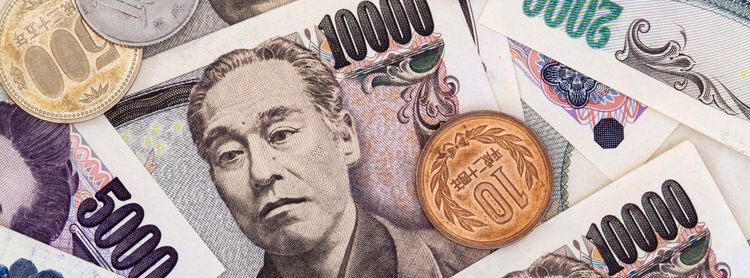Building your emergency fund in Japan

The emergency fund is the cornerstone of personal financial stability and a prerequisite for longer-term investment. It provides the cushion to weather nasty surprises without raiding your retirement savings and the peace of mind to let you lock up capital in hard-to-tap tax-advantaged accounts.
Being a foreigner in Japan adds complexity to the task of creating an effective emergency fund. We are more exposed than most people to expensive risks, making it vitally important that we think rigorously about our emergency needs. This post covers the nuances you should have in mind as a foreigner establishing an emergency fund in Japan, why a foreigner in Japan should probably have a particularly large emergency fund, and warns of some pitfalls to avoid in creating yours.
The basics of an emergency fund
In every country, the primary reason to establish an emergency fund is to create a cushion that will support you in the case of unfortunate surprises like job loss, injury or illness, family members in sudden need, and so on.
Conventional wisdom suggests that an emergency fund should cover 3-6 months of living expenses in case of job loss. It is prudent to also layer in some added cushion for a sudden medical emergency as well.
It's important that an emergency fund be held in highly liquid, low-risk assets (generally, just cash in a bank account). This can be frustrating; holding months of expenses as cash rather than in stocks or some other higher return investment feels like a missed opportunity, and in some sense, it is. But it also goes to the heart of what an emergency fund is for: when everything else goes wrong, the fund needs to be ample and accessible. If your time of need strikes when the market is in a downturn (which it is more likely to do), you may have to sell assets at a loss, leaving you with too little to meet your needs.
While many people don't hold enough of an emergency fund, it's worth guarding against the opposite extreme of holding too much cash, too: by rigorously quantifying your emergency fund needs, you know when you can plow any surplus into much more rewarding risky assets.
In short, the purpose of the emergency fund is to keep you afloat from the worst day of your year until you can establish a new and more stable foundation. For foreigners in Japan, because our worse days can be a whole lot worse, we need to think it through.
Japan-specific considerations
Foreigners in Japan face a different risk profile than we would in our home countries and than our Japanese peers. This means we have different emergeency fund needs than conventional wisdom dictates. Let's work through the line items.
Employment security and living expenses
One of the perks of being a seishain (permanent employee) of a company in Japan is that such workers are hard to fire, which may reduce your risk of needing to tap into emergency funds. If a responsible Japanese employer does want to dismiss you, they likely know that they will need to convince you to accept an offer of dismissal with an ample severance package.
However, the workplace protections in Japan are far from perfect. There are circumstances that do make layoffs possible, especially in times of financial distress for the firm. An unscrupulous employer may offer only limited severance, trusting that desperation or ignorance of the law may compel the employee to accept a poor deal.
Even if the victim of an unlawful termination is aware of their rights and decides to fight back, it can take 3-6 months to get through negotiation and arbitration with an employer before receiving compensation. If the negotiation and arbitration fail, escalating to a court case can take a year to resolve. An unscrupulous employer can take advantage of workers without the financial wherewithal to push through months of legal process.
If your visa is tied to your employer, such as an HSP visa, you are especially vulnerable, as Japan will require you to leave the country 3 months (often extendable to 6 months) after losing your job.
As a result, it is prudent for workers in Japan to maintain an ample cushion to cover living expenses for the expected duration of a job search, even when covered by seishain protections. The 3-6 month conventional guidance is generally appropriate for Japan – but there's plenty more to consider.
Residence tax
Newcomers to Japan often misunderstand how Japan's (admittedly convoluted) residence tax system works. You will often hear "you don't pay residence tax in your first year" – and this is roughly true. But there's a difference between paying a tax and accruing a liability! Even if you're not actually paying residence tax yet, you're accumulating a debt that you'll need to pay off later, and that debt needs to be considered in your emergency fund.
Residence tax (住民税, juminzei) in Japan is effectively a flat 10% tax applied to all wages while living in Japan. However, unlike the conventional income tax, the residence tax has a strange time lag to it.
Residence tax in Japan is assessed each January 1, based on income earned in the preceding year. However, for most company workers, that tax is not actually collected until June. Then, in 12 monthly installments from June the following May, one twelfth of the tax from will be withheld from the worker's pay check.
So, any income in calendar Year 1 is assessed on January 1 of Year 2, and then collected from June of Year 2 through May of Year 3. If you live in Japan for part of Year 1 but leave before January 1 of Year 2, then no residence tax obligation is accrued. Thus, if you are thinking of leaving Japan, it is better to do so at the end of the calendar year rather than the beginning.
If you stop working in Japan (because you quit you job, or you leave Japan), you are on the hook for any outstanding residence tax obligation that has been assessed. Due to the strange time lag in residence tax assessment, this means that you can will always owe between roughly 5% and 15% of a year's income as outstanding residence as an exit tax when you quit working or you leave Japan (5% if you leave in December; 15% if you leave in January).
Everyone in Japan should bear in mind this tax liability in their emergency fund planning, but as foreigners, we need to make a lump sum payment of any outstanding residence tax obligation before we leave the country, so we need the cash on hand; we can't take it from future earnings.
As a result, foreigners should add about 15% of their annual pre-tax income to their emergency fund to cover the residence tax obligation.
Other exit costs
The worst case outcome for many foreigners in Japan – which is exactly what an emergency fund is meant to cover – likely involves needing to leave the country.
Whether it's due to losing a job in Japan, or needing to suddenly return home to attend to family, most of us can likely imagine circumstances that could cause us to need to break our apartment lease (usually for 1-3 months notice and penalty), liquidate our possessions and pay cleaning fees, buy a one-way ticket to our home country, and need to reestablish our lives in our home country. Taken together, these are significant.
Finally, while it doesn't necessarily need to be represented in emergency fund planning, bear in mind Japan's chronically under-discussed exit tax (pdf): if you have had residence in Japan for five years or more as a permanent resident or under some other visas, and you have global liquid financial assets (cash, stock, etc.) worth more than ¥100M (~$700,000 at this writing), then when you leave Japan you will owe Japan a tax bill equivalent to the capital gains on all of your financial assets worldwide as if you sold them today. At a 20.3% capital gains tax rate, this is a potentially very large bill Indeed. Fortunately, the exit tax is not actually owed at the time of exit; you have until March 15 of the year after you leave to actually settle the debt, and extensions are available in some circumstances.
So how much is enough?
This is a matter of some personal discretion, but if the purpose of an emergency fund is to create safety and security in the face of a series of very bad financial events, then the total for foreigners in Japan is very large. Our "perfect storms" are especially brutal.
Personally, I've given myself a hard floor of:
- Four months of living expenses
- 15% of annual total compensation (for residence tax)
- ¥700,000 to break my lease, exit my apartment, and liquidate my furniture
- ¥200,000 for a one-way plane ticket to the US
- $10,000 to establish a new residence in the United States.
For me, this totals several million yen, plus $11,000. If I burned through all of this, I have plenty of investments in taxable brokerage accounts that I can tap into, thought of course I'd rather not.
While everyone's circumstances vary, if you're a well-paid worker in Japan, you should be thinking in terms of several million yen.
How should foreigners hold their emergency funds in Japan?
tl;dr: in yen in a regular Japanese bank account.
Given the large size of such an emergency fund, it is natural to want to put it someplace that generates yield. Unfortunately, Japan does not offer any ways to capture yield without introducing significant risk.
As of this writing, some high-yield savings accounts in the US offer 4.75% yield, and related products like short-term treasury bonds and short-term certificates of deposit reach can reach a bit above 5% yield.
Alas, 90-day a certificate of deposit in Japan yields just 0.0075%, while conventional bank accounts yield 0.001%. As a result of Japan's ultra-low interest policy, there simply is no safe yield to be had.
It is tempting to chase yield into higher risk categories, such as moving money to other currencies for higher yield savings accounts, or to the timed deposit cross-currency products common at Japanese banks.
While these strategies can generate some yield, they also invite risk: if the yen strengthens while you're holding a foreign currency, the purchasing power of your emergency fund will have shrunk, just as if you had invested in stock that lost value. While the yen might weaken while you're holding dollars or euros, it might just as well rise. Currency movements are even less predictable than stock index movements; at least most stock indexes strengthen on a sufficiently long time-horizon, while currency exchange rates are a zero sum game.
As of this writing, the only way to generate non-zero yield is to accept non-zero risk in your emergency fund. My position – and the one I recommend to others – is to simply make peace with the zero yield emergency fund, and to hold your emergency fund in your regular Japanese bank account.
Instead of taking risk with the your emergency fund, use the security of your fallback as license to make responsibly risky investments (like building up a globally diversified stock portfolio) in tax-advantaged and other long-term accounts without fear that you'll need to tap those funds at an inopportune time.
Wrapping up
I hope you found this write-up on emergency funds for foreigners in Japan helpful. Did I overstate a cost, miss a risk, overlook a safe yield opportunity? Let me know on LinkedIn or Reddit.
If you're an American looking to navigate long-term financial planning in Japan, you may also find my recent post, Can Americans in Japan use NISA accounts? useful.
Standard disclaimer: I am not a lawyer or accountant or any sort of certified financial professional. I’m just a personal finance nerd who likes finding optimizations. This is an educational post.


